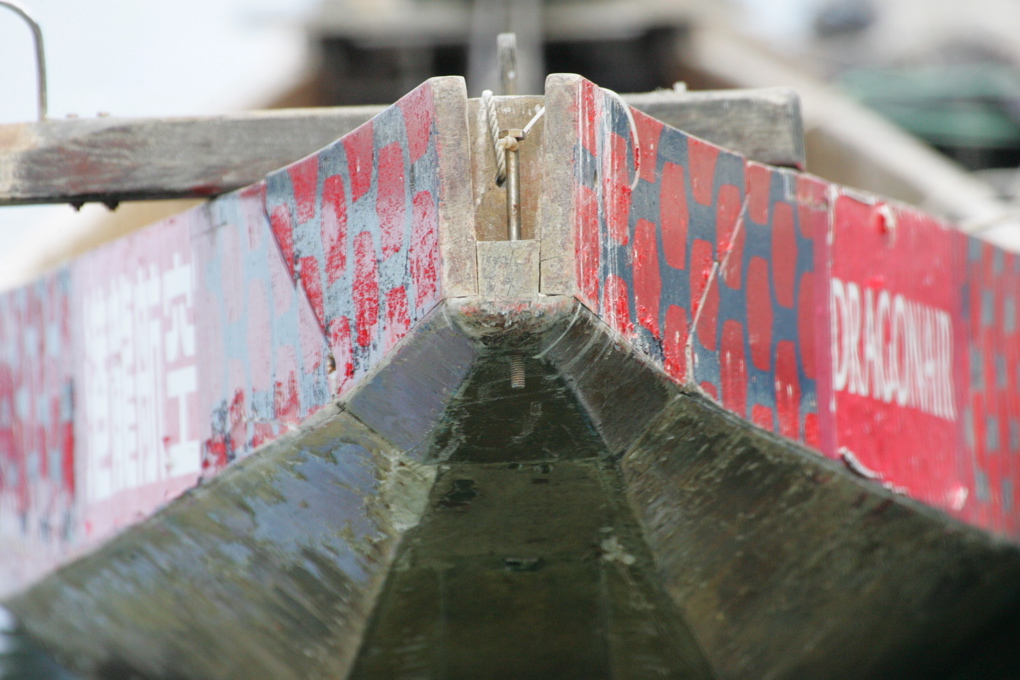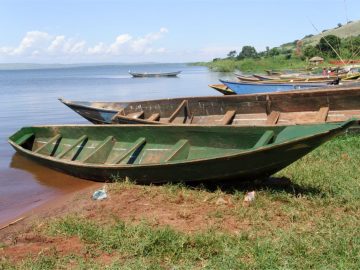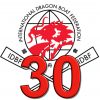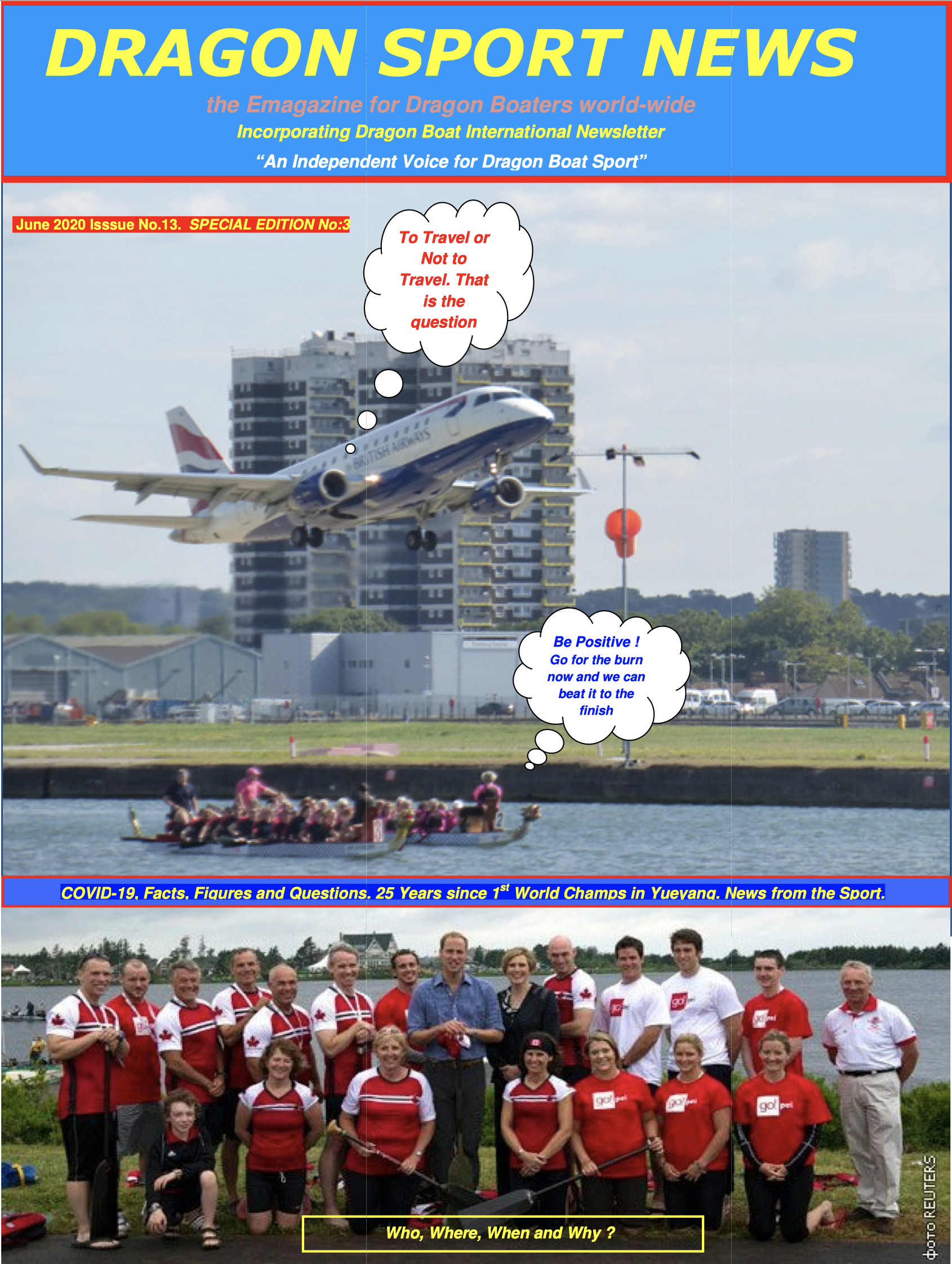“Biomechanics of Dragon Boat Racing” is a four-parts-series of scientific articles written by Sarah Ho to be published in the magazine “Dragon Boat World International” (DBWI), this Part 4 in No. 7 – July 2009.
After completing a bachelor degree in Exercise and Sport Science (University of Sydney) in 2005, she began an honours research project into the biomechanics of on-water dragon boat paddling. At the time completing a PhD at the University of Sydney, she investigated various aspects of dragon boat racing such as: the physiology of dragon boat racing, physique and physiological characteristics of elite paddlers and 3D biomechanics of simulated on-water paddling.
Part 4: 3D Kinetics & Kinematics
Inverse Dynamics
Inverse dynamics is the analysis of human movement through the measurement of body segment accelerations in order to determine the forces that cause motion. In paddling, inverse dynamics involves the measurement of acceleration of each body segment including the foot, lower leg, upper leg, pelvis, trunk, upper arm and lower arm and the measurement of known forces such as front foot, back foot, seat and paddle forces. Inverse dynamics allows the calculation of the internal forces and ‘torques’ produced at each of the body’s joints during paddling.
During dragon boat paddling, in order for the boat to move forward, the propulsive (or horizontal component) power produced by the paddler at the paddle blade must be passed onto the boat. The propulsive force at the paddle would not be transformed into boat movement if the paddler was not in contact with the boat. Thus the paddler’s contact with the boat at the feet and seat is not only critical to boat movement but may be an important aspect of dragon boat paddling technique. Inverse dynamics allows the investigation of the external forces at the front foot, back foot, seat and paddle as well as the indirect measurement of internal forces within the muscles and provides an understanding of how the different joints contribute to paddling.
3D Kinetics of Dragon Boat Paddling
Three-dimensional kinetic analysis of dragon boat racing allows the measurement of seat, feet and paddle forces during paddling. Although the major force applied during paddling is at the paddle, there are also significant forces applied at the front foot, back foot and seat during paddling. ‘Leg drive’ the application of force through the front foot during the drive phase is an aspect of paddling technique often emphasised by coaches and can be measured accurately through 3D kinetic analysis. Unpublished pilot data (Ho et al.) shows that the front foot force in the forward direction during the drive phase can be as much as 200N – equivalent to almost 20 kg wt. Considering that average paddle force for an elite male paddler is over 200N (unpublished research data, Ho et al), this front foot force would be expected to make a significant contribution in transferring the power from the paddle to the boat. There are also large forces applied through the seat in the downward and forward direction during the drive phase.
Analysis of the magnitude, synchronisation and direction (forward-backward or left-right) of the seat, feet and paddle forces can provide a better understanding of how boat movement is produced, and in particular how power from the paddle is transferred to the boat through the paddler’s contact with the boat at the feet and seat. This knowledge could potentially assist in the improvement of paddling technique to optimise boat movement, for example improving the transmission of paddle force to the boat through the feet and seat or the minimisation of unwanted body movements or forces which may hinder boat propulsion.
Three-dimensional kinematic analysis of dragon boat paddling can provide a detailed description of paddling technique. In particular, 3D analysis allows the measurement of trunk rotation which is not possible with 2D analysis. Trunk rotation is an important consideration in dragon boat paddling as it maximizes the distance over which propulsive forces can be applied.
The application of 3D kinematic analysis through inverse dynamics will also allow measurement of the contribution of body’s joints to production of power during different phases of paddling. This understanding has important implications in dragon boat training as it could lead to the development of better training programs based on specific joints, muscle groups and movements involved in paddling.
Dragon boat injury is a common occurrence among dragon boat athletes. In a study conducted in North America in 1999[1] on 253 paddlers, 26% of athletes reported injuries with 40% including shoulder injuries and 37% including back injuries. Knowledge of the torques and forces produced at the different muscle joints during paddling could assist in the prevention and treatment of injury in dragon boat racing.
3D Analysis of Dragon Boat Paddling
In the laboratory, 3D analysis of motion is conducted using high-speed infrared cameras to record movement, and equipment such as force plates or transducers to measure forces. A 3D model of the athlete can be created from reflective markers placed on anatomical landmarks. The motion of the athlete is captured using high-speed infrared cameras which are sensitive to the reflectiveness of these markers and tracks the two-dimensional position of these markers frame-by-frame. After a calibration process, the two-dimensional images of the markers from each camera are transformed into three dimensions so that the location of each these markers in real space are known.
In a research project conducted at the University of Sydney (Australia), a dragon boat simulator was constructed based on the dimensions of a 20-crew dragon boat. This simulator included a seat instrumented with force transducers, a gunnel and foot rests designed to fit over three force plates in the university’s Motion Analysis laboratory. In order to provide paddling resistance, a Concept2 paddling ergometer was used, with a force transducer connected to the paddle to measure paddle resistance. Forty-eight reflective markers were placed on the paddler to create a 3D model of the athlete (Figure 1). Thus, this system allowed the measurement of three-dimensional front foot, back foot, seat and paddle forces and movement simultaneously during simulated paddling (Figure 2).

Figure 1. 48-marker 3D model of paddler captured with a 14-camera Motion Analysis system.

Figure 2. Three-dimensional kinetic and kinematic analysis was conducted to quantify the contribution of feet force, seat force, paddle force and torque at the body joints to the development of power during paddling.
Testing and analysis of any sport should ideally be conducted in the field, or in the case of dragon boat racing, on-water. Analysis of the kinetics of on-water dragon boat racing would require the instrumentation of a dragon boat to measure feet and seat forces. Three-dimensional kinematic analysis would require video filming to be conducted using 2 cameras moving alongside the boat. These cameras would need to be synchronized and calibrated with one camera placed on the side to measure forward-backward movement and one in the front to measure left-right movement. The process of analyzing video movement through ‘digitizing’ (as described in Issue 4 of DBWI), the frame-by-frame conversion of specific body and landmark points to position data is very time-consuming. Thus 3D kinetic and kinematic on-water analysis of dragon boat racing would be a complicated process. The construction of a simulator to replicate a dragon boat and measurement of feet, seat and paddle force and paddler movement in a motion analysis laboratory provides a more practical solution to measuring 3D kinetics and kinematics of dragon boat paddling. In this case, during paddling the paddler and ‘boat’ are stationary and kinetic and kinematic data can be viewed in real time. However, the obvious limitation of this method is the accuracy of the set up in simulating the ‘feel’ of on-water paddling and the boat moving in the water.
Sarah Ho was at the time she wrote this article a PhD Student in the Exercise, Health and Performance Research Group, Faculty of Health Sciences at the University of Sydney in Australia.
References
1. deGraauw, C., L. Chinery, and R. Gringmuth, Dragon boat athlete injuries and profiles. Medicine and Science in Sports and Exercise, 1999. 31(5 (Supplement)): p. S259.




















